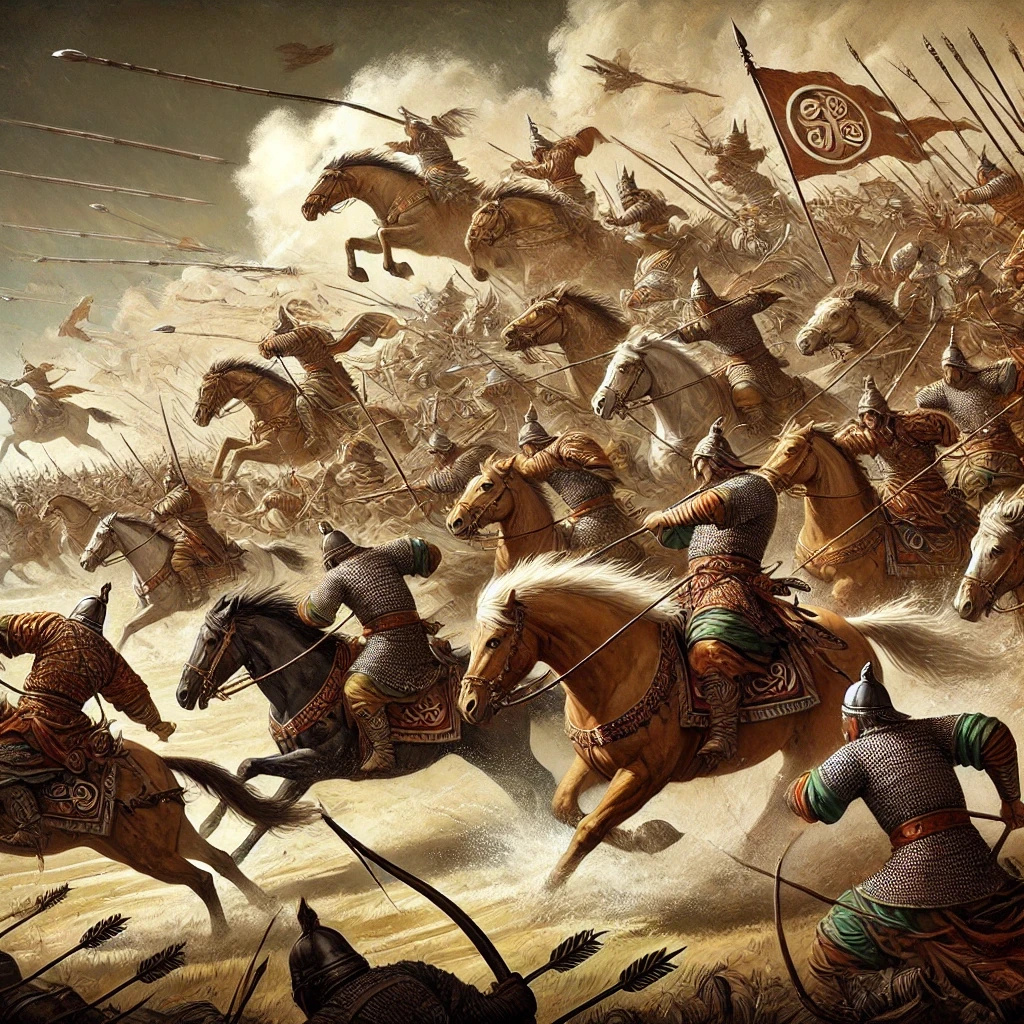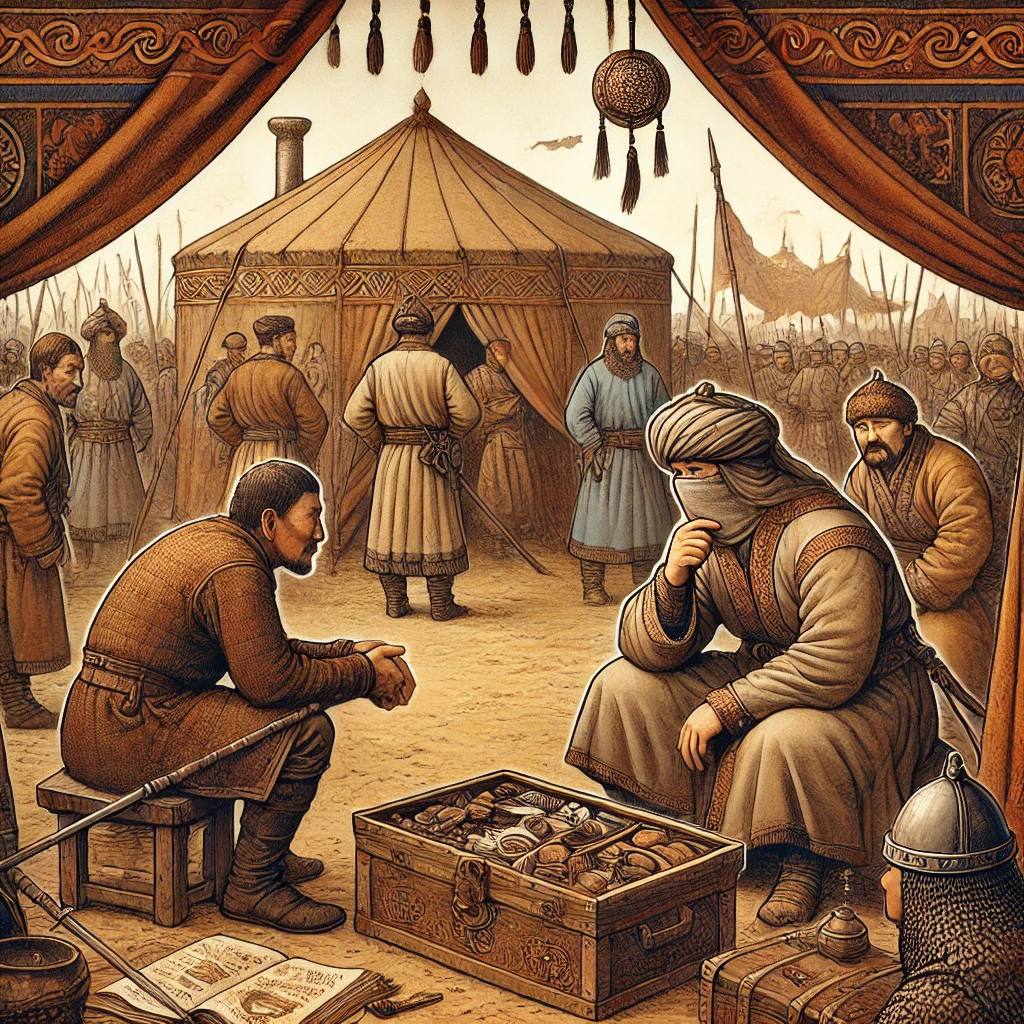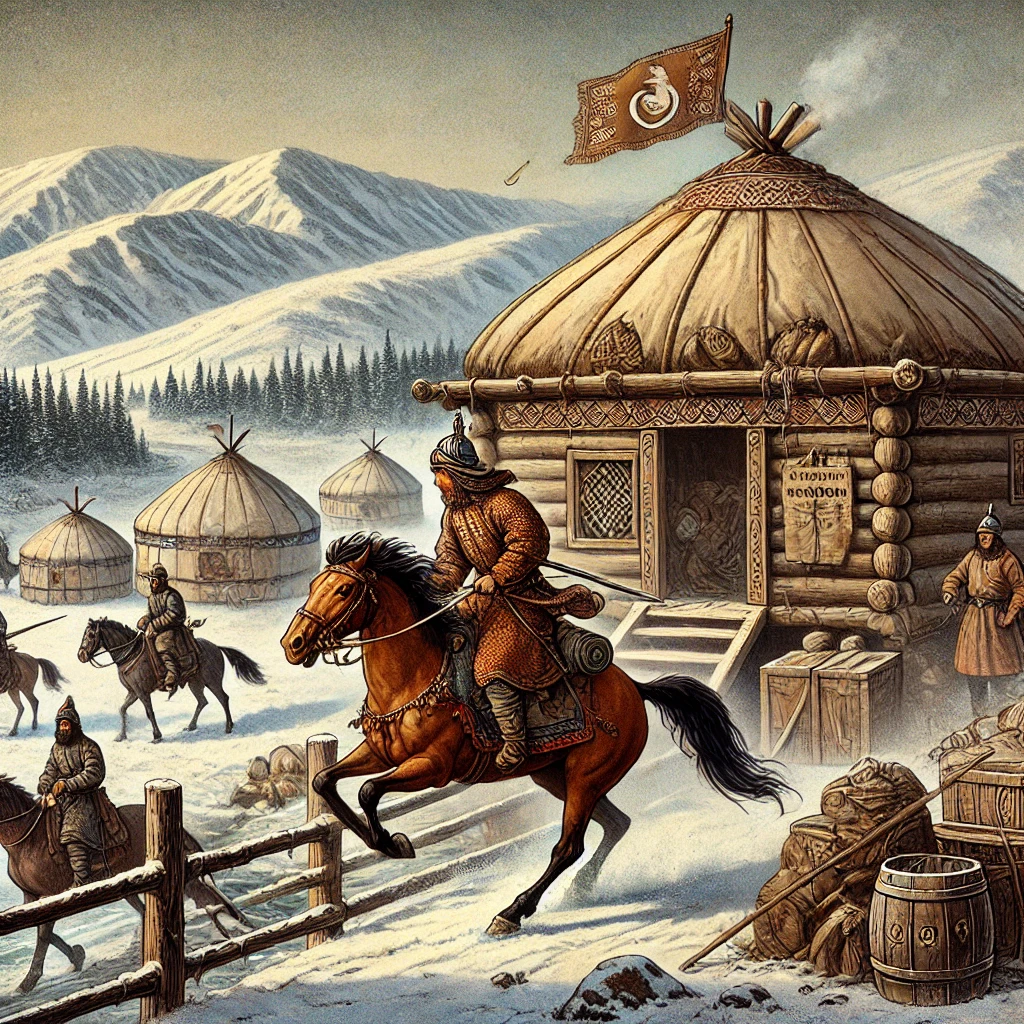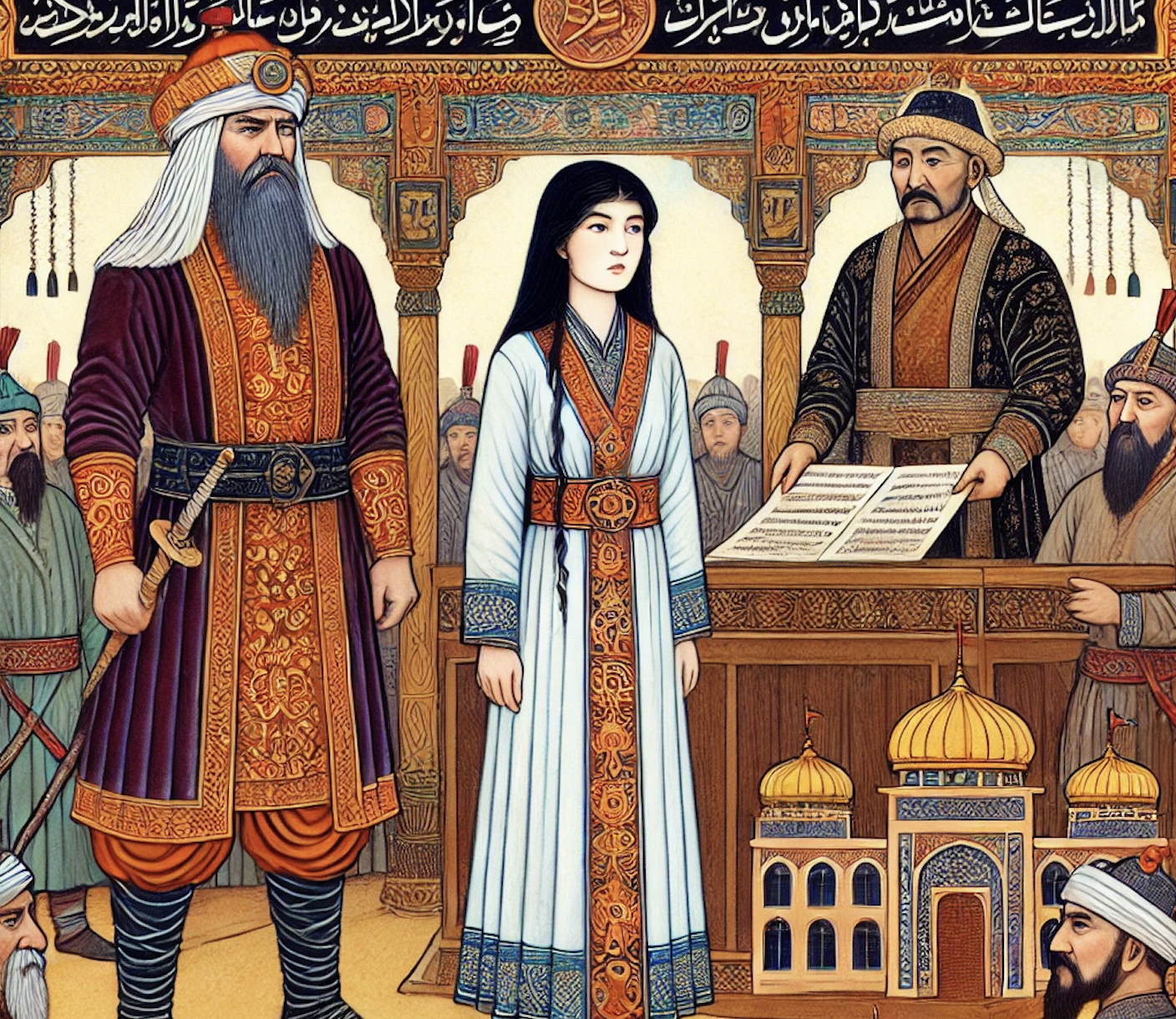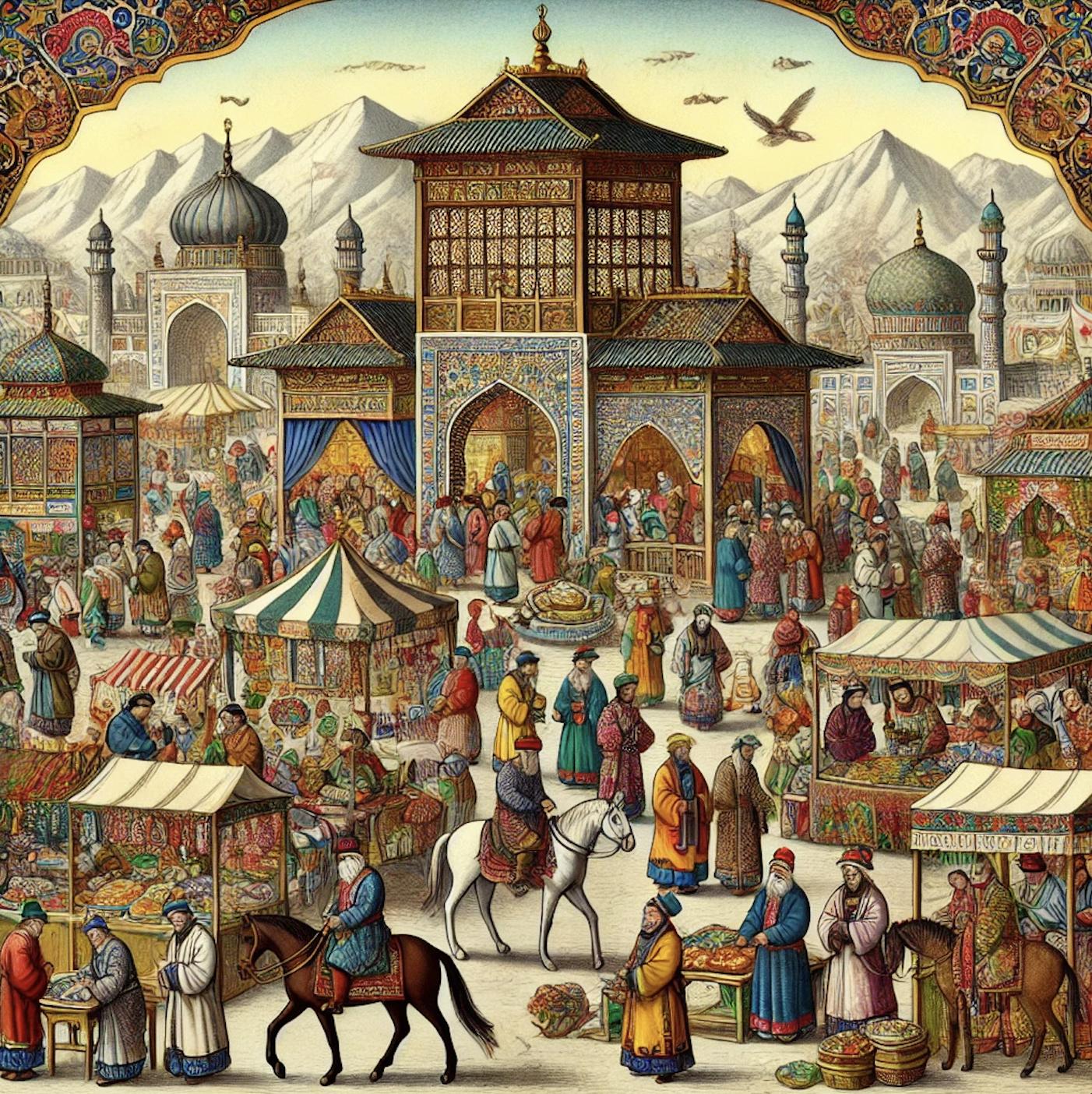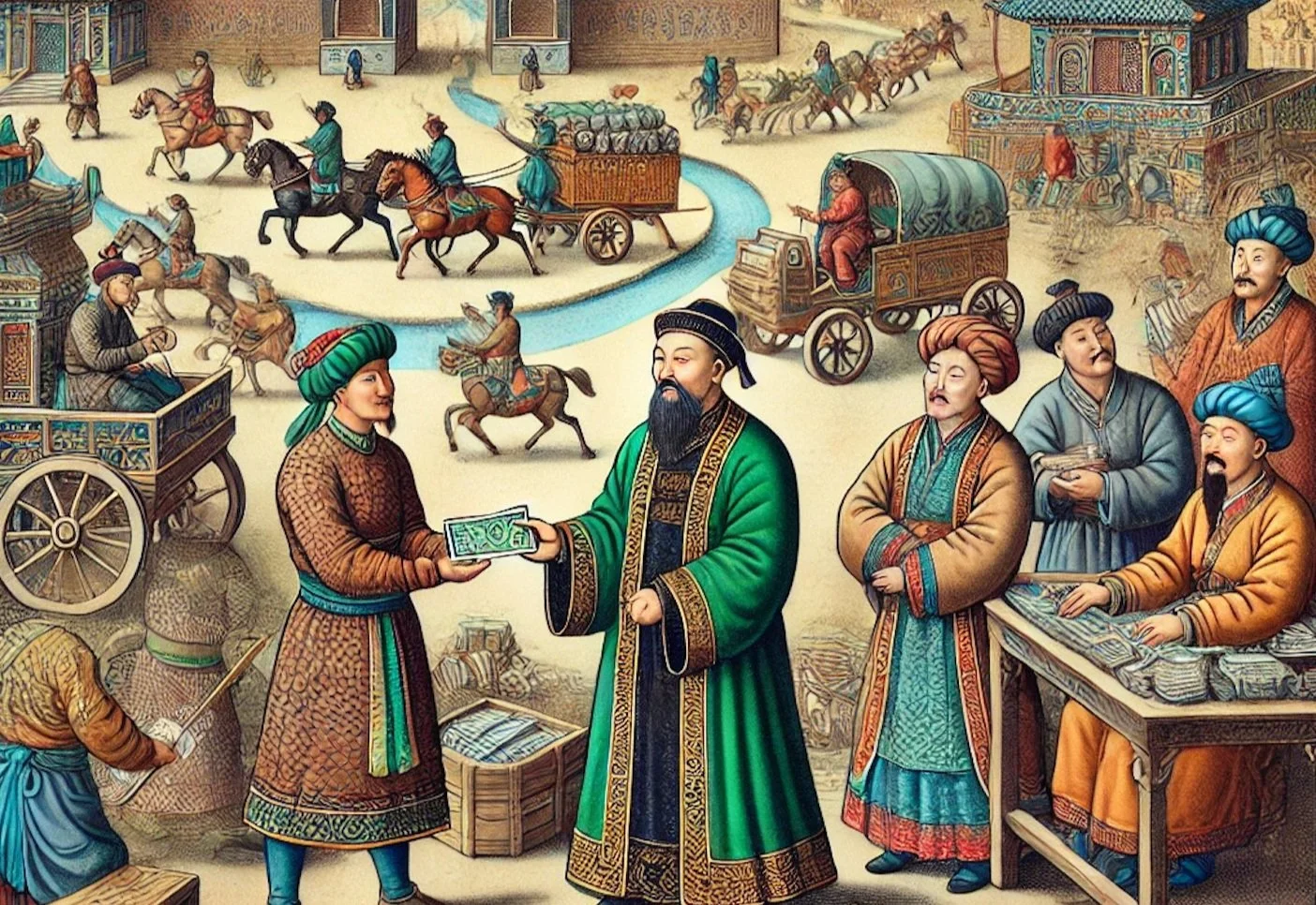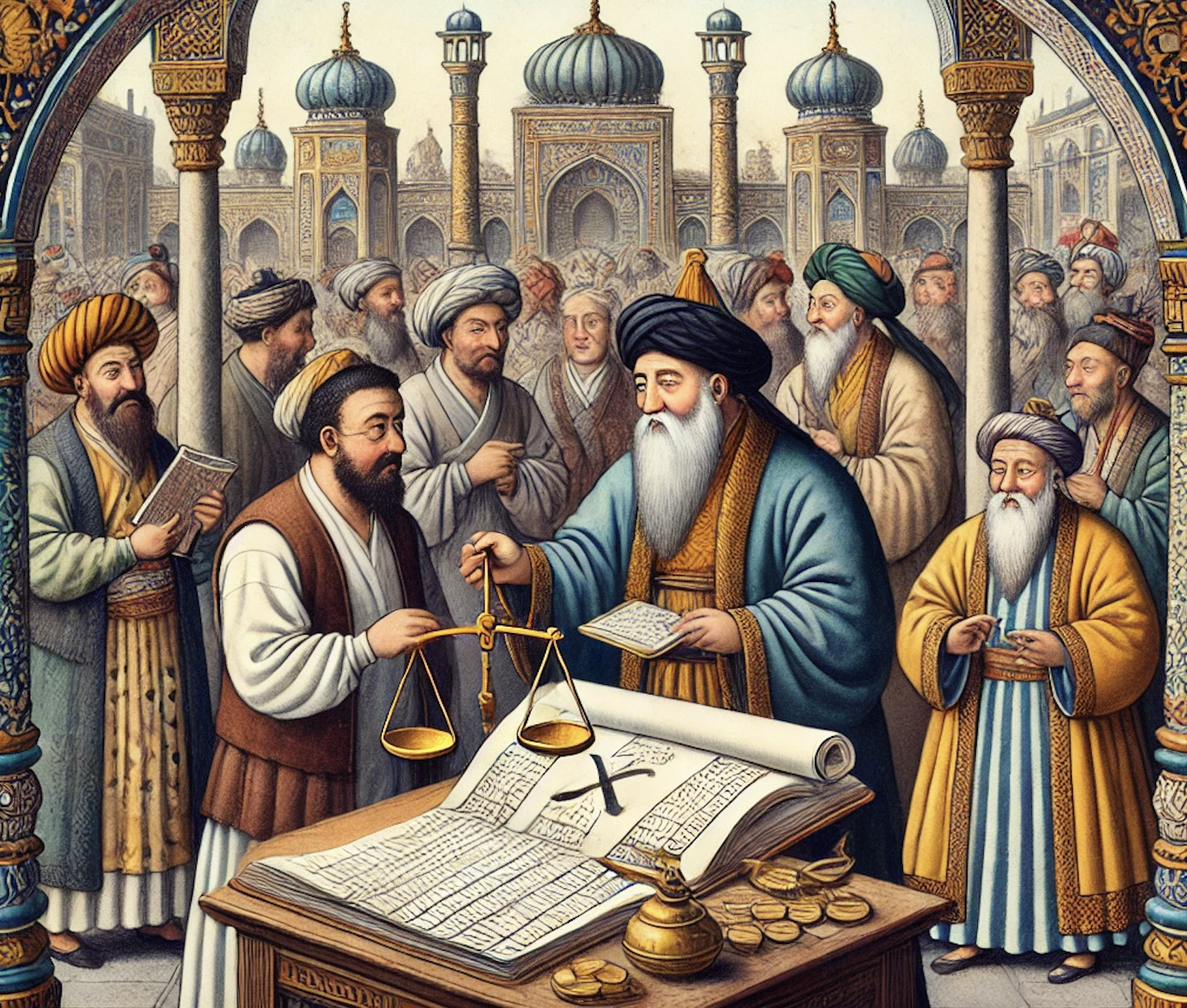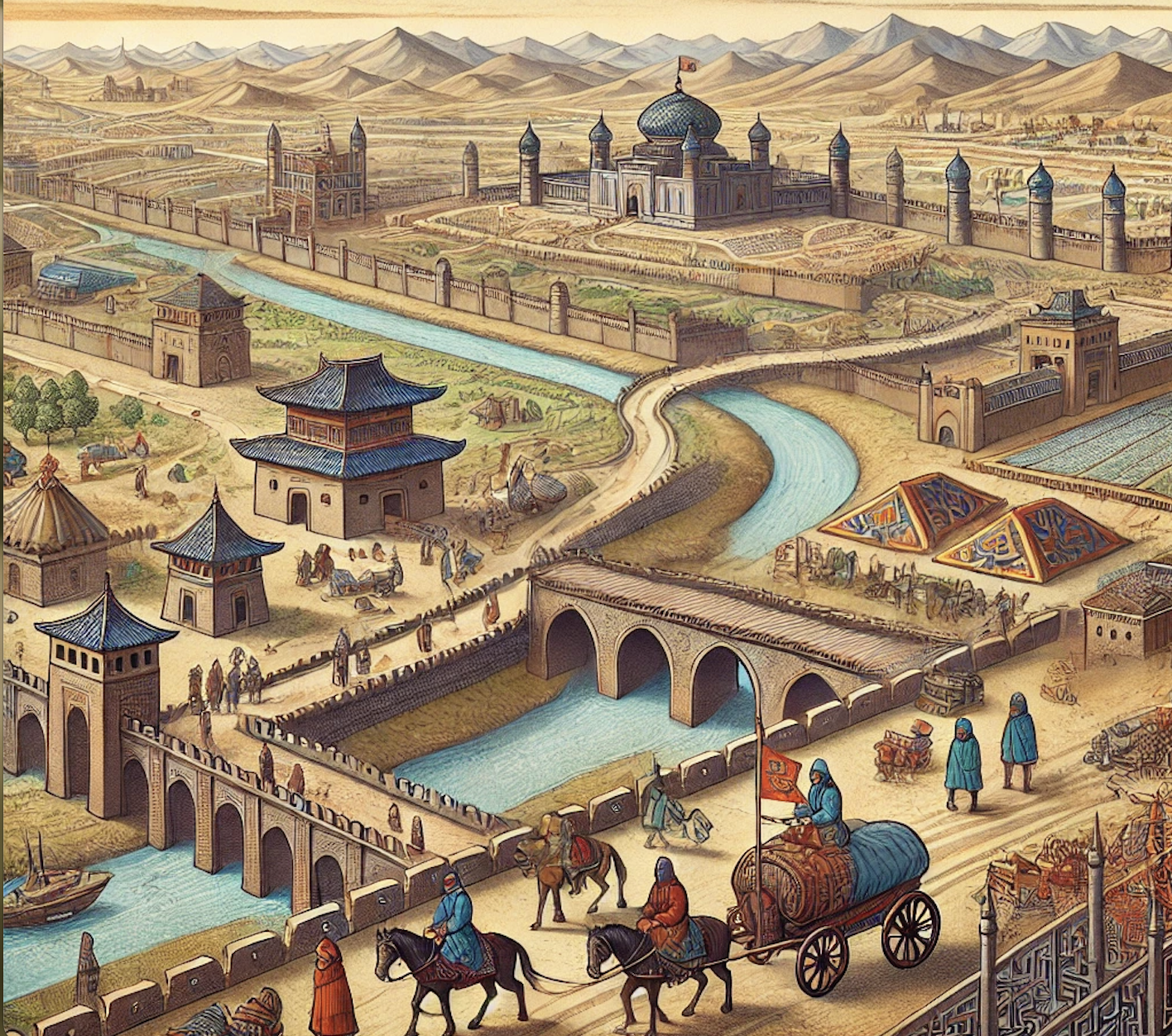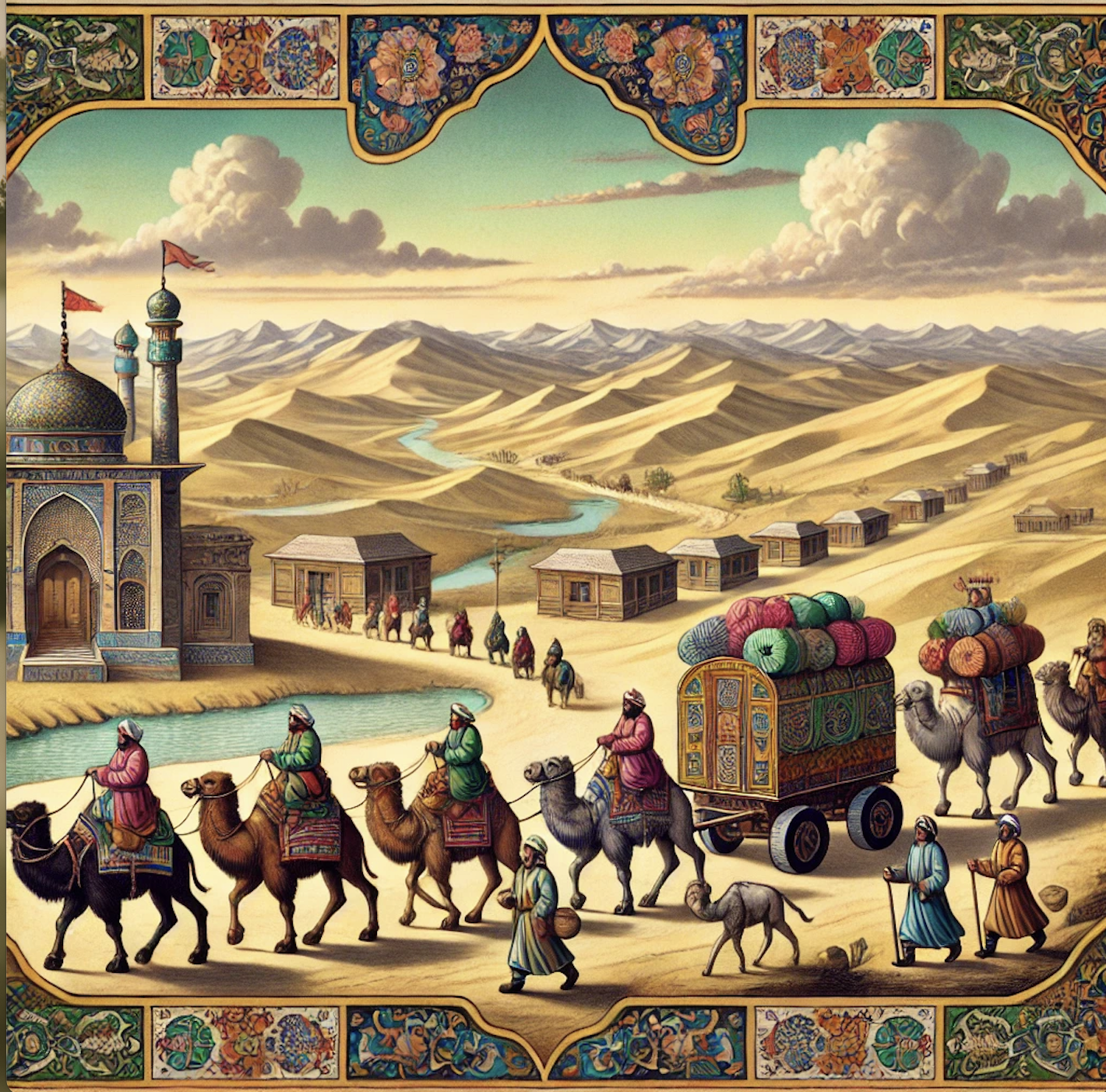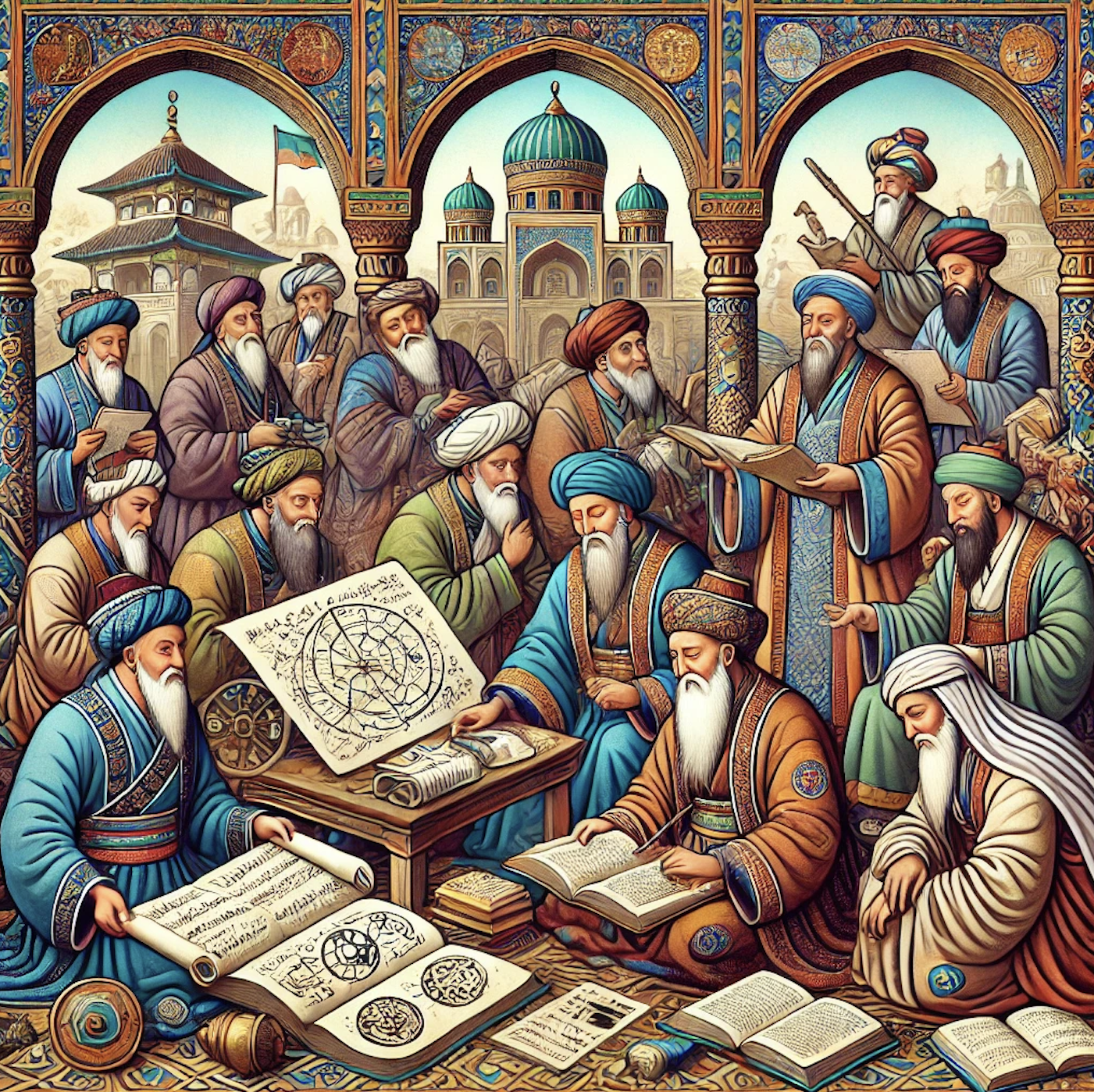8 Mongol military tactics that changed how wars are fought, including false retreats, horse archers, siege technology, spies and propaganda.
In the vast, wind-swept steppes of Mongolia, a handful of nomadic tribes evolved into one of the most formidable military machines the world has ever seen. Within just a few decades, the Mongols — once dismissed as primitive horsemen — would carve out the largest contiguous empire in history, stretching from the edges of Eastern Europe to the shores of the Pacific Ocean. At its height, the Mongol Empire covered nearly 12 million square miles, encompassing China, Persia, Russia and parts of the Middle East, with its influence even reaching Korea and Southeast Asia.
But their astonishing success wasn’t just a matter of brute strength. The Mongols were strategic masterminds, innovators in a world still clinging to outdated tactics. They wielded mobility like a weapon, turned deception into an art form, and mastered psychological warfare so effectively that their very name struck terror into the hearts of distant nations.
“The Mongols rewrote the rules of warfare.
Their campaigns shattered the conventional strategies of the time, leaving entire civilizations scrambling.
But what truly set the Mongols apart was how they consistently turned the battlefield into a proving ground for innovation, efficiency and relentless adaptability.”
“Genghis Khan recognized that warfare was not a sporting contest or a mere match between rivals; it was a total commitment of one people against another,” writes Jack Weatherford in Genghis Khan and the Making of the Modern World. “Victory did not come to the one who played by the rules; it came to the one who made the rules and imposed them on his enemy. Triumph could not be partial. It was complete, total and undeniable — or it was nothing. In battle, this meant the unbridled use of terror and surprise. In peace, it meant the steadfast adherence to a few basic but unwavering principles that created loyalty among the common people. Resistance would be met with death, loyalty with security.”
The Mongol focus on precision, planning and an uncanny ability to adapt led to victories that reshaped the course of history. Let’s dive into the tactics that made the Mongol Empire from 1206 to 1368 an unstoppable force — and secured its place as one of history’s most dominant military powers.
1. Horse archers as the backbone
The open steppe: a vast, unforgiving expanse where the horizon blurs into the sky. The wind howls, carrying with it the distant thunder of hooves — faint at first, but growing louder, a storm of dust and fury heading your way. Before you can even catch a glimpse of your attackers, arrows begin raining down from the sky like lethal hail, striking with unerring precision.
This was the nightmare that armies across Asia and Europe faced when they encountered the Mongols. Unlike the heavily armored knights of Europe or the disciplined infantry of China, the Mongols fought as if they were part of the wind itself — swift, elusive and deadly.
Their entire way of life had trained them for this. From childhood, Mongol boys were taught to ride with the skill of seasoned cavalrymen and to shoot with a deadly accuracy that could strike a sparrow mid-flight. But what made them truly terrifying was their ability to do both — racing across the battlefield at full speed with bows drawn.
No army wanted to face a horde of these warriors, with each solider armed with a composite bow, a weapon capable of firing arrows with greater force and at longer ranges than any bow of the time. The Mongols would circle their enemy, shooting while riding with such precision that no one within range was safe.
Unlike conventional armies that moved in rigid formations, the Mongols attacked with fluid, ever-shifting maneuvers, swarming like a living organism. They were never where you expected them to be, always striking at your most vulnerable points.
It’s easy to see how traditional armies found themselves outmatched. Try to chase the Mongols, and they’d vanish into the distance, only to regroup and encircle you. Stand and hold your ground, and you’d be worn down by relentless waves of arrows. And this was just the beginning of their tactics — this merciless dance of speed and precision was merely the opening move in battles that would leave entire regions trembling in their wake.
2. Hit-and-run tactics and feigned retreats
The battlefield is quiet — too quiet. Your forces stand on edge, gripping swords and shields, scanning the horizon for any sign of the Mongol horde. They’ve attacked twice already today, firing volleys of arrows before vanishing into the vast plains. Frustration simmers among your ranks. You know they’re out there, hiding just beyond sight, waiting for the perfect moment to strike again.
Suddenly, the ground begins to tremble, a distant rumble of hooves echoing through the air. There they are: a line of Mongol riders streaking toward you at breakneck speed, dust billowing behind them. Your archers scramble to prepare — but just as they aim, the Mongols turn and retreat, racing back into the open steppe. A cheer goes up from your troops — they’re running away!
But the retreat is a trap. What you don’t realize is that this maneuver is exactly what they want. As your forces give chase, emboldened by what they believe to be a fleeing enemy, the Mongols keep just out of reach, drawing you farther from your strong position. They’re leading you into a killing ground — a carefully chosen area where they hold every advantage.
Then it happens. The Mongols suddenly stop, wheeling around with the fluidity of a flock of birds, and a second group of riders bursts from a hidden position, flanking your forces. Arrows rain down in a deadly crossfire, and before you can even order a retreat, your ranks are in chaos. The “retreating” riders now charge back with renewed ferocity, encircling you on all sides. It’s no longer a battle — it’s a massacre.
This was the brilliance of Mongol hit-and-run tactics: the feigned retreat. Where traditional armies saw retreat as a sign of defeat, the Mongols turned it into one of their deadliest weapons. They understood human nature — how pride, fear and the desire for victory could be manipulated. Time and again, enemy forces were lured into pursuing what they thought was a vulnerable target, only to find themselves surrounded, overwhelmed and utterly crushed.
3. Spreading fear, rumors and propaganda
You’re a soldier stationed in a distant city, a place that until recently had felt like a secure fortress, surrounded by thick walls and defended by thousands. But now, unease grips the streets. The merchants whisper dark tales from travelers — stories of entire towns wiped off the map, of rivers running red with blood. The name on everyone’s lips is the same: Mongols.
You hear that when the Mongols approach a city, they send messengers ahead with an offer: Surrender or face annihilation. Those who resist are said to be shown no mercy: civilians slaughtered, leaders executed and survivors — if there are any — left alive just so they can spread word of the devastation to the next town. The stories are horrific, often exaggerated with every retelling, but that’s the point. Before the Mongols even arrive, their reputation arrives first, a shadow that stretches across hundreds of miles.
The panic sets in. You hear of entire armies fleeing without even putting up a fight, abandoning their posts at the mere rumor of Mongol scouts. Even among your fellow soldiers, there’s doubt. What if the rumors are true? What if the Mongols really are unbeatable? What chance do you have against an enemy that fights like a phantom, one that doesn’t just defeat armies but erases cities from existence?
The Mongols understood the power of propaganda better than any other force. They didn’t just wage war on the battlefield; they waged psychological warfare on entire populations. They would often exaggerate their numbers and the brutality of their tactics, knowing full well that fear could sometimes do more damage than arrows or swords. By the time the Mongols appeared at the gates, many cities had already lost the battle in their minds. The choice between surrender or certain death seemed all too clear.
In this way, the Mongols won countless victories without even lifting a weapon. Their enemies crumbled under the weight of their own dread, driven by stories that blurred the line between truth and myth.
4. Siege warfare
The city walls loom tall and impenetrable. They’ve held back countless enemies before, giving the citizens within a sense of security. They’ve heard of the Mongols — how they devastate everything in their path — but they’re confident that these steppe warriors, known for their lightning-fast cavalry, won’t have the patience or the tools to crack these mighty defenses.
But as the days stretch on, something unsettling begins to happen. Siege engines start appearing — massive trebuchets that hurl boulders with frightening precision, towers that inch closer every night and tunnels that seem to dig themselves under the city walls. The Mongols are even said to have thrown diseased corpses over walls to sow panic and chaos.
Early in their conquests, the Mongols recognized that brute force alone couldn’t bring down the heavily fortified cities of China, Persia and Europe. So they adapted. They captured and recruited siege engineers from the civilizations they conquered, learning how to breach walls that had stood for centuries.
The Mongols would also cut off all supplies to the city. Starvation and desperation would do the work for them, as defenders grew weaker and morale crumbled. Every siege was a calculated operation designed to break both the city’s defenses and its spirit.
The siege of Xiangyang in the 13th century is one of the most famous examples of Mongol tenacity. The city, a key fortress along the Yangtze River, was heavily fortified and seemed impregnable. But the Mongols weren’t deterred. After years of encircling the city and relentlessly attacking, they deployed new trebuchets built with the expertise of Persian engineers they had brought into their ranks. These trebuchets had longer range and greater power than anything the defenders had seen before. When they began firing, the walls that had withstood years of assault began to crumble. Once Xiangyang fell, the path to conquering southern China was wide open.
By the time news of a Mongol siege reached neighboring cities, panic often spread faster than the armies themselves. The fall of one fortress became a warning to the next, and with each victory, the Mongols solidified their reputation as an unstoppable force. Siege warfare allowed them to conquer the unconquerable, turning the cities that should have been their greatest obstacles into stepping stones for their ongoing conquest.
5. Use of spies and scouts
The sun dips low over the horizon, casting long shadows across the camp. As your army prepares for the next day’s march, there’s an uneasy tension in the air. You’ve heard the rumors — how the Mongols always seem to know every move you make, every weakness in your defenses, even the most secret paths through the mountains. It’s as if they’ve been watching you for weeks, perhaps months. The truth is, they have.
Long before the first Mongol arrow is loosed in battle, their spies and scouts have already done much of the heavy lifting. These agents, often disguised as merchants, travelers or even defectors, slip unnoticed into enemy territories. By the time a Mongol army arrives, they know everything: the strengths of your defenses, the locations of your food stores, the morale of your soldiers and the political tensions within your ranks.
This intelligence network is a vast, organized system. Mongol scouts map out entire regions, identifying the best routes for swift movement and the hidden vulnerabilities of their enemies.
In the world of Mongol warfare, knowledge truly was power. Where other armies relied on brute strength or blind courage, the Mongols leveraged the hidden movements of their spies and scouts to outthink their opponents long before they clashed on the battlefield.
6. Rapid communication
The Mongol army moves like a shadow across the landscape — swift, coordinated and seemingly unstoppable. But what’s truly remarkable isn’t just their speed; it’s their ability to remain connected across the vast expanse of their empire. From the frozen forests of Siberia to the deserts of Persia, the Mongols maintain perfect coordination over thousands of miles. How? Through a means of communication incredibly advanced for its time: a system known as the yam.
Imagine being a messenger tasked with carrying critical orders across hundreds of miles of hostile terrain. You’re not traveling alone or unaided, though. As you gallop along the steppe, you know that every 20 to 30 miles, there’s a relay station — each stocked with fresh horses, supplies and guards. You ride at full speed to the next station, where you hand off your message to the next rider, who continues the journey without missing a beat.
In a world where armies could take weeks to coordinate movements over long distances, the Mongols collapsed time and space. Orders that would take weeks to reach other empires were transmitted across the Mongol Empire in a matter of days. This rapid communication allowed them to stay unified, adapting to changing situations and striking with devastating precision.
7. Learning from conquered peoples
The Mongol Empire was a rolling juggernaut that devoured cities, kingdoms and empires. Yet, unlike many conquerors before them, the Mongols didn’t just take land — they took knowledge as well. As they moved across continents, they were like sponges, soaking up the best tactics, technologies and ideas from every culture they encountered. For the Mongols, wisdom could come from anywhere, and they knew that the difference between victory and defeat often lay in adapting and improving upon what others had already mastered.
The sophisticated siege engines Genghis Khan and his successors used weren’t Mongol inventions. They were borrowed, adapted and perfected from the Chinese and Persian engineers whose lives were spared to serve under the Mongol banner.
This ability to assimilate the skills and knowledge of conquered peoples was one of the most overlooked strengths of the Mongols. While other conquerors destroyed what they didn’t understand, the Mongols saw opportunity in every culture they encountered. Skilled craftsmen, scholars, engineers and even military experts were often spared, given new homes and tasked with serving the Mongol cause.
Once they learned a new tactic or technique, they integrated it into their existing strategies, creating a flexible and formidable war machine that could handle pretty much any challenge.
This willingness to learn, adapt and evolve was a key factor in the Mongols’ success. Where other empires stagnated, the Mongols thrived by remaining open-minded and pragmatic. In doing so, the Mongols proved that the smartest way to dominate the world wasn’t just through force, but through understanding and adaptation.
8. Living off the land and rapid campaigns
The wind sweeps across the open plains, carrying with it the scent of dry grass and distant smoke. You’re a soldier in an army marching into unfamiliar territory, uncertain of what lies ahead. Supplies are dwindling, and every day feels like a struggle to keep your men fed and ready to fight.
But across the field, the Mongol army seems unfazed. They move swiftly and silently, barely slowed by the lack of resources that would cripple any other force. How do they do it? How do they manage to keep their strength, their speed and their ferocity even in the harshest conditions?
The answer lies in their ability to live off the land. Unlike the lumbering armies of Europe or China, bogged down by supply chains and the need to carry provisions for weeks or months, the Mongols were masters of survival and self-sufficiency. They didn’t rely on vast wagon trains of food or endless lines of pack animals to feed their troops. Instead, they adapted to whatever environment they found themselves in, thriving in conditions that would break lesser armies.
Mongol warriors were raised on the harsh steppes, where survival meant knowing how to make the most of what little was available. They were trained to be self-reliant from a young age, and this ethos extended to their campaigns. The Mongols could cover vast distances with astonishing speed because they weren’t weighed down by the need to secure elaborate supply routes. Instead, they carried what they needed on their horses — dried meat, fermented milk and hard cheese — and when supplies ran low, they simply hunted, foraged or took what they needed from the land.
Mongol warriors could subsist on mare’s milk, often fermenting it into the drink known as kumis, and in dire situations, they could bleed their horses, drinking the blood, mixed with water, for sustenance.
This ability to live off the land, coupled with their lightweight and durable supplies, made the Mongol army one of the most mobile forces in history. They rode at a pace that left their enemies reeling.
The Legacy of Mongol Warfare
The Mongols rewrote the rules of warfare. From the vast plains of Mongolia to the fortified cities of Europe and the Middle East, their campaigns shattered the conventional strategies of the time, leaving entire civilizations scrambling. But what truly set the Mongols apart wasn’t just their ability to win battles; it was how they consistently turned the battlefield into a proving ground for innovation, efficiency and relentless adaptability.
Their mastery of speed and mobility made them the swiftest force the world had ever seen, while their psychological warfare broke enemy morale before the first arrow was ever fired. They used intelligence networks and rapid communication to stay steps ahead of their foes, creating an empire where information flowed faster than any army could march. And with their willingness to learn from every culture they encountered, the Mongols turned their enemies’ technologies and tactics into the bedrock of their growing power.
The Mongol Empire may have eventually fragmented, but the strategies they pioneered can be seen in modern military tactics and logistics. Even beyond warfare, from women’s rights to paper currency, Mongol innovations helped shape the modern world.
Demonized as an inferior race for centuries, the Mongols are finally getting the recognition they deserve. –Wally

